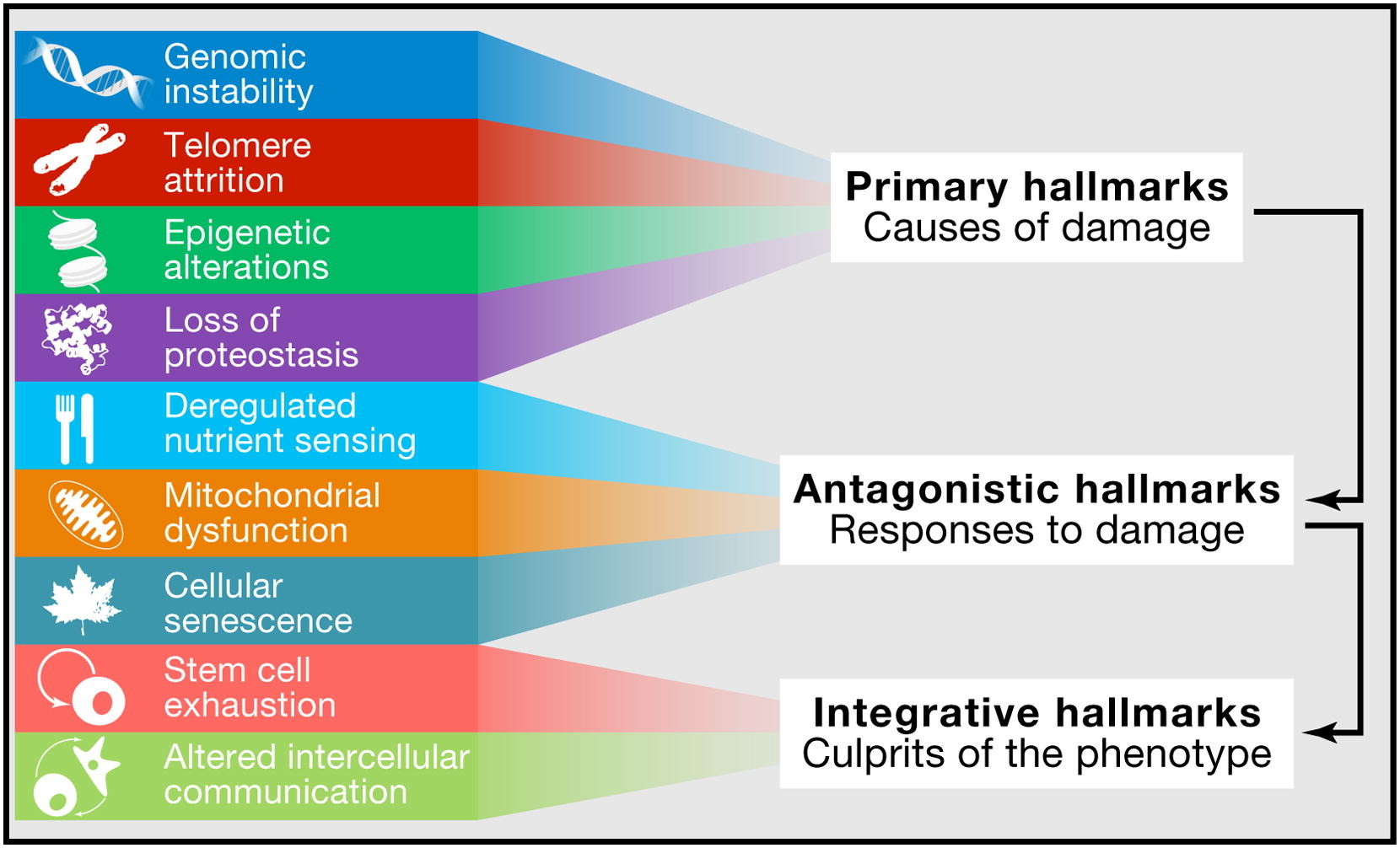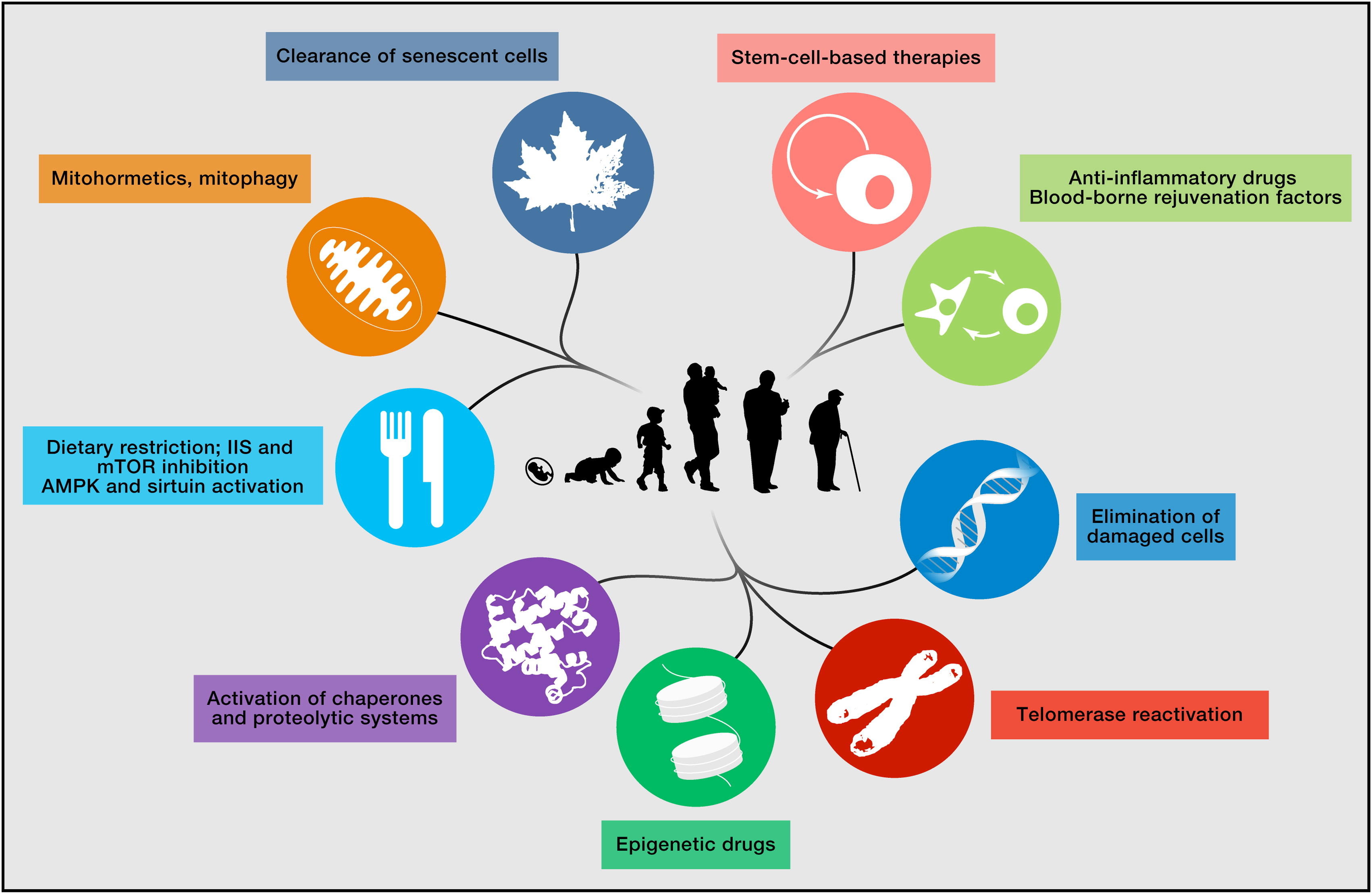Is ageing a disease?
This is a very challenging question, isn’t it? If you like biochemistry as I do. You may know that the advanced biochemistry science available today put in practice could allow you to live younger, happier and longer.
Perhaps with up to 25 years.
However, if you aren’t using a laser sharp customised, effective and coherent strategy,ageing is just a hit and miss process. In this case the ageing process will run down your own body by overpowering your tissues, organs and your body systems.
So, let’s start and see what ageing is…
For decades, one of the most important questions in gerontology was whether ageing is a disease or the norm.
Today, many anti-ageing experts agree that there are excellent proofs suggesting why ageing should be defined as a disease[1].
Ageing is the cause of many age-related diseases and it differs from disease in the same way that cause differs from effect[2].
This means that ageing increases the probability of death due to age-related diseases, which are late manifestations of ageing.
It is enough to cause all age-related diseases, sooner or later, without dependence on genetic or environmental factors[1].
In simple words, it can be said that if Alzheimer’s disease or type 2 diabetes is not diagnosed during ones life time, it is only because cancer or a stroke terminates life before Alzheimer’s diseases or type 2 diabetes can be diagnosed (and vice versa)[1].
What are the mechanisms of ageing?
Professor Hulka and colleagues first defined mechanisms of ageing as “cellular, biochemical or molecular alterations that are measurable in biological media such as human tissues, cells, or fluids[3].”
Mechanisms of ageing can be used to predict normal biological processes, pathogenic processes, or pharmacological responses to a therapeutic intervention.
They can serve as aids in understanding the prediction, causes, diagnosis, progression, regression, or outcome after disease treatment[3].
Particularly, a mechanism of ageing may represent a biological parameter of an organism that either alone or in combination with other measurable parameters, in the absence of disease, better predict functional capability at some late age than will chronological age[4].
Therefore, the ageing process is entirely predictable however, in order to halt it or reverse it (up to a point) one requires advanced, expert anti-ageing knowledge and maximum precision.
Why do researchers seek the mechanisms of ageing?
Some of the major arguments for the development of mechanisms of ageing can be summarised as follows:
- Different species have different lifespans. For example the average lifespan for mayflies is only 24 hours whilst certain shells known as Ocean Quahog can live up to 400 years.
Since there are significant differences in the same parameters within different species then the passage of time might not the best measure of the rate of ageing.
- Individual differences in lifespan between the same species suggest that there are also underlying differences in ageing processes, lifestyle and environmental conditions, separate from disease, that control or influence lifespan.
- If ageing is the result of a single or small number of basic processes, then a single intervention such as for example caloric restriction could alter the rate of ageing for an entire organism.
- To be successfully treated, disease needs early diagnosis and treatment. That’s why early ageing mechanisms would permit customised lifestyle interventions or treatment when it has a better chance of producing a positive result than treatment begun late in the disease process[5].
If you are passionate about the science of slowing down your clock and like precision as I do and you’d be able to do better in your life by adding up to 25 years of high quality life under your belt then, this article is for you.
For the purpose of avoiding information overload I provide you below with 4 brief ageing mechanisms and 3 simple pieces of actionable anti ageing advice for each one of the following 4 mechanisms.
When you decide to work with me. Based on your individualities I will coach you, expert advice and provide you with your most effective, clear and strong anti-ageing road map.
Senescence Blocking Mechanisms
Re-Activate Your Living Longer and Younger Factor with Jazz Alessi Precise Anti-Ageing Customisation
Leukocyte telomere length (LTL)
Mechanism category: Telomeres and telomerase
Sample: Blood lymphocytes
Description: Telomeres are protective nucleoproteins (proteins that are structurally associated with nucleic acids), that cap the ends of linear chromosomes.
Very short or dysfunctional telomeres are known to trigger senescence.
In humans, mean leukocyte telomere length (LTL) has been widely studied and shown to be positively correlated with lifespan, thus ithas been proposed as a potential mechanism of biological ageing.
LTL at any age is a measure of the individual’s LTL at birth and its shortening afterward.
Mean LTL is generally shorter in adult men than in women at any given age, consistent with shorter average male life expectancy in most populations.
Furthermore, numerous studies reported associations between LTL and age-related diseases such as heart disease, type 2 diabetes mellitus and cancer[6 , 7].
Level of Evidence: High – Widely studied in humans
Slow down your ageing process by improving your Leukocyte Telomere Length (LTL)
- I advise to implement a leisure-time physical activity of 4 hours of slow walking (less than 2 mph) per week to achieve appropriate values of LTL.
However, the best outcomes are noticed in those with leisure-time physical activity of more than 8 hours of slow walking per week[8].
- Greater amounts of moderate-to-vigorous intensity physical activity (MVPA) are also related with much better LTL results.
For each 1 hour/week increase in moderate-to-vigorous intensity physical activity, your LTL will be on average 3 base pairs longer[8].
- Moreover, if you are injured and can’t use HIT training then, I suggest to use a higher walking speed (brisk walking) – this is associated with longer LTL.
In between all waking types those who are walking fast or very fast (3 mph) have the best results of their LTLs values (LTL is on average 40 base pairs longer for each incremental increase in walking speed)[8].
- Are you constantly feeling tired, perhaps worn out, run down and would like to maximise your youth factor, energy and vitality?
Contact me now for your Free Consultation, here.
Telomerase reverse transcriptase (TERT)
Mechanism category: Telomeres and telomerase.
Telomeres are DNA-protein complexes found at the ends of chromosomes that protect chromosomes from deterioration or from fusion with neighbouring chromosomes.
Telomerase is the enzyme that repairs the telomeres so that they do not become gradually shorter during successive series of chromosome replication[9].
Sample: Blood lymphocytes
Description: Telomerase reverse transcriptase (TERT) is an active part of the enzyme telomerase.
The absence of telomerase activity in most human cells results in telomere shortening during ageing and thus shorter lifespan.
TERT expression in cells that otherwise lack telomerase activity may cause these cells to bypass senescence and become “immortal”.
New findings suggest that telomerase activity can be restored to human cells by TERT gene transduction or potentially via drug therapy.
This way, extended-lifespan cells could be developed and used in forms of cell therapy for the treatment of age-related diseases.
Opposite, the absence of telomerase acts as a limitation on cancer growth unless telomerase becomes reactivated[10].
Level of Evidence: High – Widely studied in humans
Reduce the risk of cancer and deleterious effects of ageing by improving your telomerase reverse transcriptase (TERT) levels
- Research showed that cardiorespiratory exercises (running/jogging, swimming, biking or vigorous walking) of 30 minutes 3-5 times per week is sufficient to elicit an upregulation of key telomeric gene TERT and TERT levels accordingly[11].
I advise you to use the upper end which is 30 minutes / 5 times per week.
- People who are carrying risk alleles (a variant form of a specific type of gene) of the TERT gene have increased chance for liver, pancreatic and ovarian cancers development.
In addition, a lack of vitamin D has also been related with the development of these cancers.
Since the majority of us are deficient for vitamin D based on modern dietary and lifestyle choices, vitamin D supplementation may prove beneficial in achieving appropriate TERT levels [12].
- Lycopene is a strong anti-oxidant found in tomato (especially if it is cooked) in the highest amounts.
Studies showed that lycopene exhibits a strong anti-cancer effect which may prove beneficial to those carrying the risk alleles of the TERT gene.
Since, cooked tomato forms one of the key components of the Mediterranean diet, such diet is a step forward for achieving appropriate TERT levels [13] although, this is still not the best anti-ageing diet.
Growth hormone (GH)
Mechanism category: Growth, energy, and reproductive function
Sample: Serum/plasma
Description: Growth hormone (GH) activates growth, reproduction and regeneration of cells in humans and other animals.
But, its levels decline during ageing.
This natural process in the endocrine system most likely contributes to undesirable effects of ageing on body composition, skin characteristics and functional changes, which further affect the general quality of life, but on the other hand, it may offer protection from cancer and various age-related diseases.
Therefore, growth hormone replacement therapy is almost certain to involve both risks and benefits. Future studies will examine whether low-dose GH therapy has a potential in some individuals with frailty and/or sarcopenia (loss of skeletal muscle mass associated with ageing)[14].
Level of Evidence: High – Widely studied in humans
Increase your growth hormone production and avoid this important hormone age-related decline
- Exercise is a very potent physiological stimulus for growth hormone secretion, and both aerobic and resistance exercise result in significant, acute increases in growth hormone secretion.
- Repeated sessions of aerobic exercise within a 24-hour period may result in increased daily growth hormone concentrations.
- Growth hormone response to acute resistance training is dependent on the work-rest interval and the frequency and load of the resistance exercise used. Therefore, the ability to equate intensity across different resistance exercise protocols is suggested and expected[15].
- Are you constantly feeling tired, perhaps worn out, run down and would like to maximise your youth factor, energy and vitality?
Contact me now for your Free Consultation, here.
Insulin-like growth factor 1 (IGF-1)
Mechanism category: Growth, energy, and reproductive function
Sample: Serum/plasma
Description: Insulin-like growth factor 1 (IGF-1) is a hormone that plays an essential role in normal growth and ageing in humans and is known to reduce with advancing age.
Low levels of circulating IGF-1 have been associated with osteoporosis, impaired cognitive function, and heart disease.
On the other hand, high serum IGF-1 is associated with increased risk of several common cancers, primarily prostate, breast, colorectum, and lung.
IGF-1 as an anti-ageing mechanism may help prevent chronic disease by identifying high-risk individuals [16, 17].
Level of Evidence: High – Widely studied in humans
Maintain appropriate insulin-like growth factor 1 (IGF-1) levels and lower the risk of age-related diseases (osteoporosis, impaired cognitive function, heart disease and cancer)
- Customised nutrition diet plans consisting of 30% protein, 30% carbohydrate and 40% of fat content is associated with 31% increase of IGF-1 levels after 5 weeks.
Such diet may be recommendable in those with low serum levels of this hormone and high risk of age-related diseases development such as osteoporosis, impaired cognitive function, heart disease[18].
However, the macro and micro nutrients source also matter as well as any other individual particularities.
- Increased concentrations of IGF-Iare associated with increased risk of developing several forms of cancer.
Therefore, insulin-sensitising low-intensity aerobic exercise (combination of walking/jogging and cycle ergometry exercise) is considered to be an effective method for reducing the levels of IGF-I[19].
- Research also showed that the combination of low-fat diet and adequate exercise program is effective method to reduce IGF-1 levels and subsequently the risk of cancer [19].
Conclusion
As you can see ageing is the sum of all age-related diseases and this sum can be considered as the best mechanism of ageing.
Among other things you may have noticed already that ageing can be successfully contained as a pre-disease to prevent its progression to diseases.

This is a specialised and professional team work.
It is spread in between a medical doctor, long term celebrity nutritionist, exercise specialist and a lifestyle expert.
Since the successful treatment of every disease usually depends on starting as early in the course of the disease as possible, there is an obvious interest and high importance in finding early your customised mechanisms of ageing.
By mediating your lifestyle, genes alterations and maintaining correct concentrations of age-related bio-markers, a risk of various diseases may be reduced and our lifespan may be extended and the quality of our life dramatically and positively improved.

Ample research shows that customised exercise and nutrition diet plans to name just two things which matter could help us to maintain appropriate levels of essential body products and physical parameters that were in this article described as potential mechanisms of ageing.
For more information about your youth factor potential and additional steps, contact me now for your FREE CONSULTATION here.
References:
- Blagosklonny MV. Disease or not, ageing is easily treatable. Ageing (Albany NY).2018;10(11):3067-3078.
- Gavrilov LA, Gavrilova NS. [Is ageing a disease? Biodemographers’ point of view.]. AdvGerontol. 2017;30(6):841-842.
- Mayeux R. Biomarkers: potential uses and limitations. NeuroRx. 2004;1(2):182-8.
- Baker GT 3rd, Sprott RL. Biomarkers of ageing. Exp Gerontol.1988;23(4-5):223-39.
- Sprott RL. Biomarkers of ageing and disease: introduction and definitions. Exp Gerontol. 2010;45(1):2-4.
- Sanders JL, Newman AB. Telomere length in epidemiology: a biomarker of ageing, age-related disease, both, or neither?. Epidemiol Rev. 2013;35(1):112-31.
- Aviv A, Shay JW. Reflections on telomere dynamics and ageing-related diseases in humans. Philos Trans R SocLond B Biol Sci. 2018;373(1741):20160436.
- Shadyab AH, LaMonte MJ, Kooperberg C et al. Leisure-time physical activity and leukocyte telomere length among older women. Exp Gerontol. 2017;95:141-147.
- Chan SR, Blackburn EH. Telomeres and telomerase. Philos Trans R SocLond B Biol Sci. 2004;359(1441):109-21.
- Hornsby PJ. Telomerase and the ageing process. Exp Gerontol. 2007;42(7):575-81.
- Chilton WL, Marques FZ, West J, et al. Acute exercise leads to regulation of telomere-associated genes and microRNA expression in immune cells. PLoS One. 2014;9(4):e92088.
- Arem H, Yu K, Xiong X et al. Vitamin D metabolic pathway genes and pancreaticcancer risk. PLoS One. 2015;10(3):e0117574.
- Giovannucci E, Ascherio A, Rimm EB, Stampfer MJ, Colditz GA, Willett WC.Intake of carotenoids and retinol in relation to risk of prostate cancer. J Natl Cancer Inst. 1995;87(23):1767-76.
- Bartke A. Growth hormone and ageing: a challenging controversy. Clin Interv Ageing. 2008;3(4):659-65.
- Wideman L, Weltman JY, Hartman ML, Veldhuis JD, Weltman A. Growth hormonerelease during acute and chronic aerobic and resistance exercise: recentfindings. Sports Med. 2002;32(15):987-1004.
- Frater J, Lie D, Bartlett P, McGrath JJ. Insulin-like Growth Factor 1 (IGF-1) as a marker of cognitive decline in normal ageing: A review. Ageing Res Rev. 2018;42:14-27.
- Borofsky ND, Vogelman JH, Krajcik RA, Orentreich N. Utility of insulin-likegrowth factor-1 as a biomarker in epidemiologic studies. Clin Chem. 2002;48(12):2248-51.
- Gannon MC, Nuttall FQ. Effect of a high-protein diet on ghrelin, growthhormone, and insulin-like growth factor-I and binding proteins 1 and 3 insubjects with type 2 diabetes mellitus. 2011 Sep;60(9):1300-11.
- Nishida Y, Matsubara T, Tobina T, et al. Effect of low-intensity aerobic exercise on insulin-like growth factor-I andinsulin-like growth factor-binding proteins in healthy men. Int J Endocrinol. 2010;pii: 452820.



